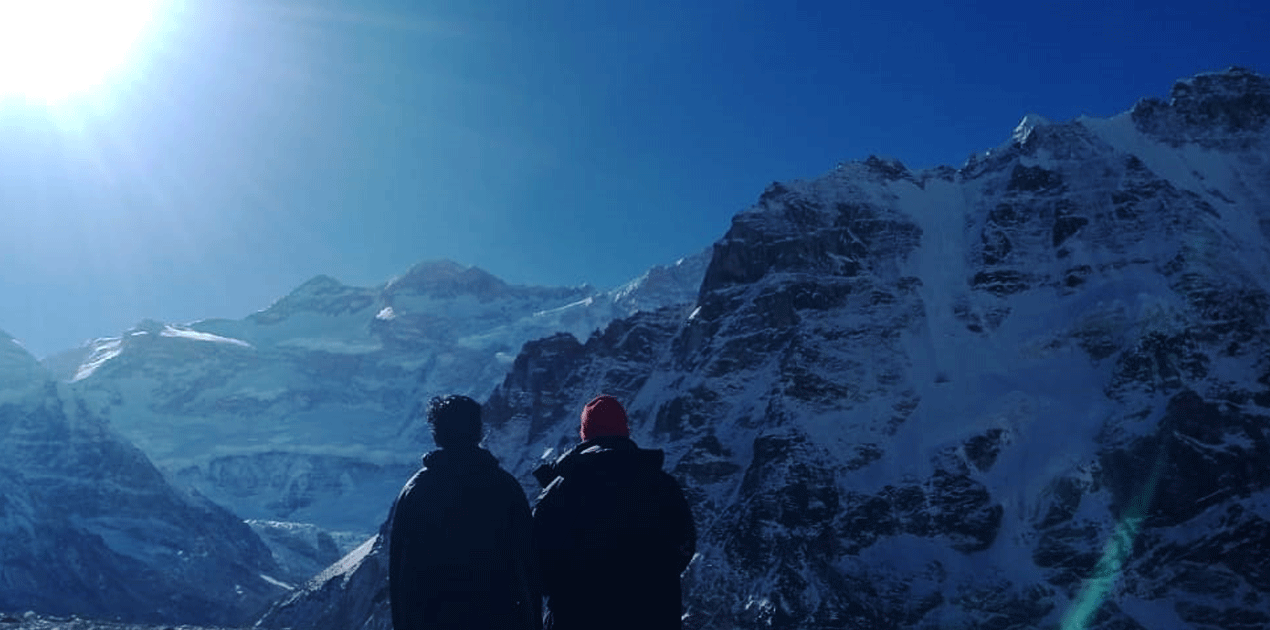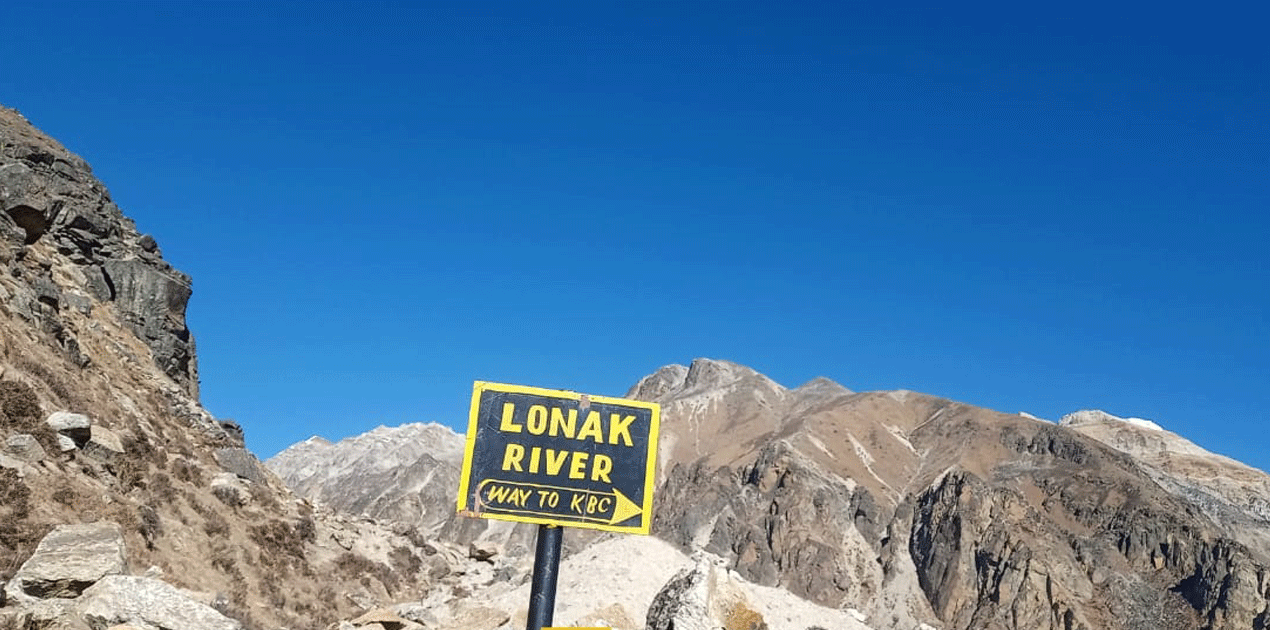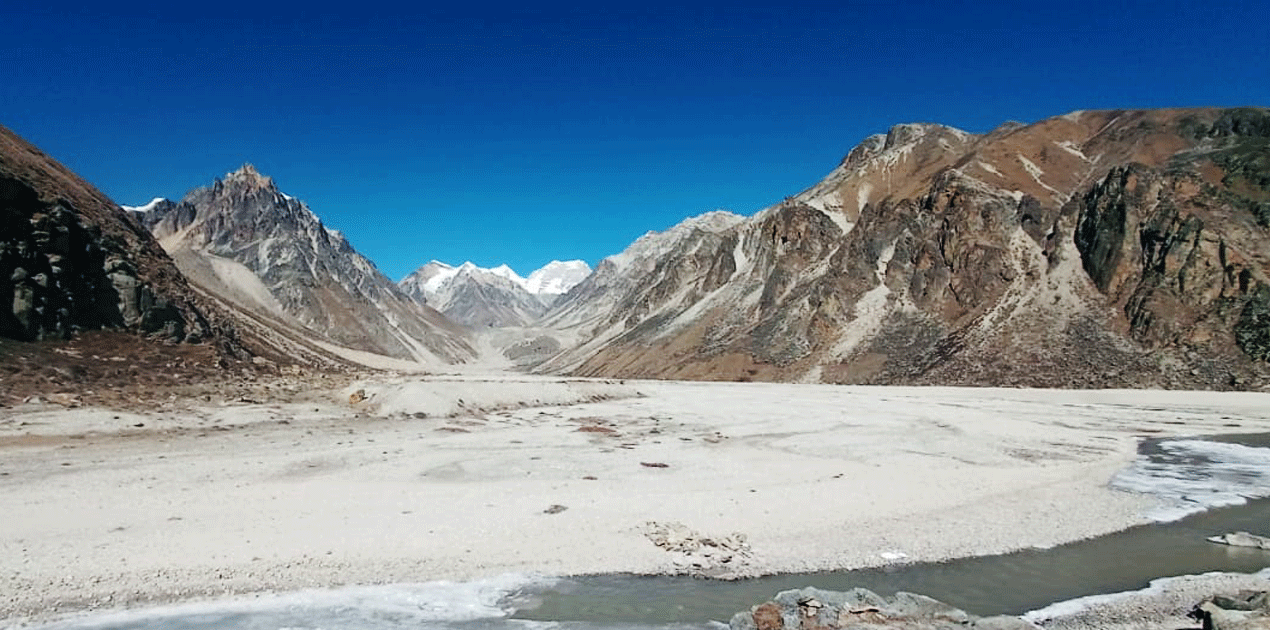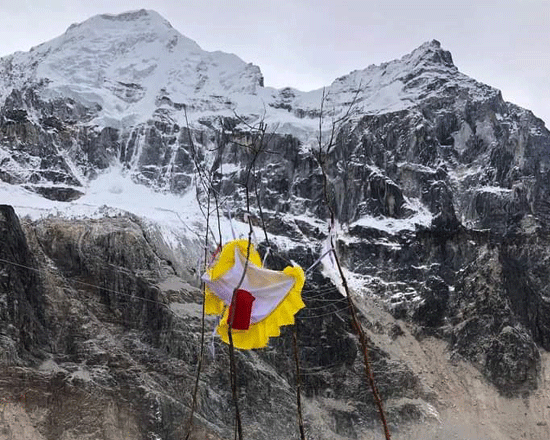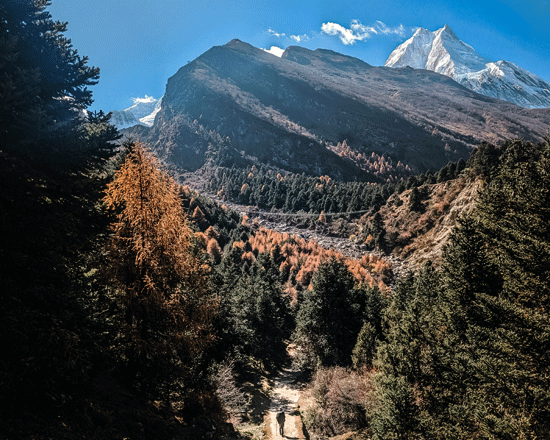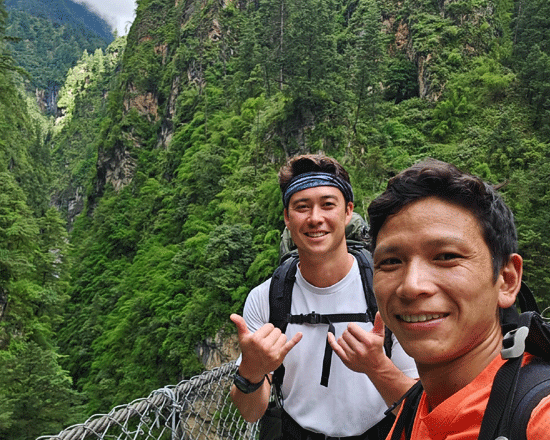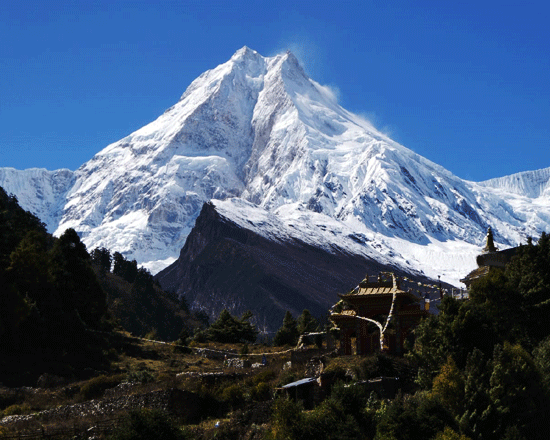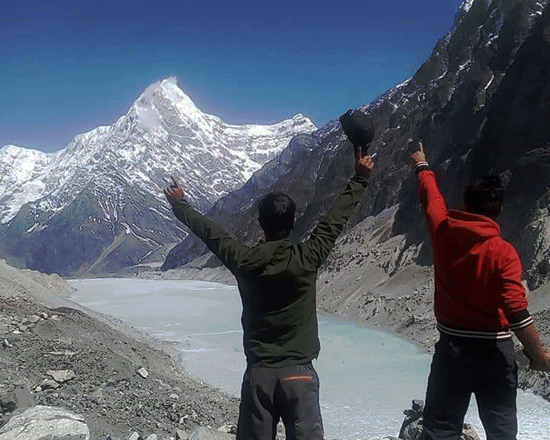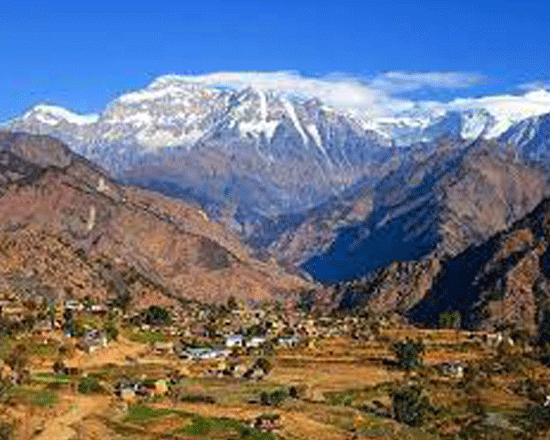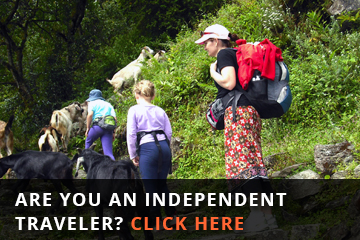Kanchenjunga North Base Camp Trek
Kanchenjunga North Base Camp Trek
Wilderness TrekkingTrip Facts
Since the terrain can be hard and the days long, hikers on these treks should be in good physical condition and have some previous mountain walking experience. Steep climbing may be involved, although it is never necessary to use ropes. Treks at this level can he arranged for periods of 16 to 21 days. Typically, a gradual ascent through a green river valley will lead you up to a number of high passes, where you will reach the altitude of 5416m. Often times, you will get a close insight into the Tibetan culture. Participants should expect to trek above 5416m/17872ft.
100%
Overview
Kanchenjunga North Base Camp Trek An 12-Day Journey
The Kanchenjunga North Base Camp Trek is a thrilling adventure that takes adventurers far into Nepal’s remote eastern region. The trek offers a unique opportunity to observe the grandeur of Mount Kanchenjunga (8,586 meters), the third-highest mountain in the world. The trek passes through pristine landscapes, dense forests, and rural villages, offering an authentic experience of the natural splendor and cultural richness of the area. As trekkers traverse the Kanchenjunga Conservation Area, they encounter endangered wildlife and vegetation while experiencing the unique traditions of the local people who have lived in the Himalayan foothills for generations.
Highlights of the Kanchenjunga North Base Camp Trek
The Kanchenjunga North Base Camp Trek offers a unique combination of mountain views, cultural diversity, and rich flora and fauna. Trekkers enjoy spectacular views of Kanchenjunga, Jannu (Kumbhakarna), and the Kanchenjunga Glacier while moving through diverse landscapes, from subtropical forests to high-altitude alpine grasslands.
One of the biggest draws of the trek is its unspoiled and isolated nature. Unlike the more well-known trekking regions of Everest and Annapurna, the trails to Kanchenjunga North Base Camp offer solitude and a true wilderness experience. Trekkers trek through isolated villages where local residents still adhere to traditional
customs and traditions.
The trek also offers a panoramic view of the Kanchenjunga Glacier, a massive sheet of ice flowing down from the mountain slopes. The target, Pangpema (5,143 meters), offers a panoramic view of Kanchenjunga’s northern face, a sight to behold in the Himalayas.
Cultural Experiences on the Kanchenjunga North Base Camp Trek
The Kanchenjunga region is home to a wealthy array of ethnic groups, which have their own language, customs, and religious faith. Trekkers meet Limbu, Rai, Sherpa, and Tibetan communities on the trails, who have inhabited the high-altitude lands for hundreds of years.
The Limbu tribe, the predominant ethnic group of the lower valleys, has a shamanist and animist religion. They possess diverse cultural practices like ritual dances ancestor worship, and the sacred use of plants during rituals. In the upper regions, Tibetan Buddhist influences begin to intensify, particularly in villages like Ghunsa and Kambachen, with monasteries and prayer wheels testifying to the strong religious identification of the locals with the mountains.
Along the trek, trekkers witness Buddhist chortens (stupas), mani walls (stone tablets with prayers inscribed on them), and flapping prayer flags in the wind. These spiritual landmarks are a sign of prayers for peace, compassion, and protection. Visitors also have the opportunity to witness local festivals, such as Losar (Tibetan New Year), which entails mask dances, feasting, and group prayers.
The cuisine in the region of Kanchenjunga is as varied as the culture. Trekkers get to taste Limbu specialties like sel roti (sweet rice doughnut) and Sisnu soup (nettle soup). Tibetan-influenced villages have traditional foods like Thukpa (noodle soup) and tsampa (roasted barley flour). Yak butter tea, a very salty beverage, is normally offered to visitors as a sign of hospitality.
Flora and Fauna in the Kanchenjunga Conservation Area
The Kanchenjunga Conservation Area (KCA), established in 1997, spans 2,035 square kilometers of land and protects one of Nepal’s most biologically diverse regions. The area supports a wide range of habitats and climates, from subtropical forests at lower elevations to alpine meadows and glacial moraines at higher elevations.
Flora:
The lower sections of the trek are covered with thick forests of oak, pine, and rhododendron. During **spring (March-May), the rhododendrons bloom in vibrant colors of red, pink, and white and form a stunning sight along the hillside. As the path goes upward, these forests give way to juniper bushes, alpine grasses, and medicinal plants like Yarsagumba (a very valuable caterpillar fungus rumored to have medicinal value).
The Kanchenjunga Glacier features a fragile alpine ecosystem, where hardy plants such as edelweiss and moss campion thrive. There are these species that have learned to grow in cold conditions present within the harsh climate near the base camp.
Fauna:
The Kanchenjunga region is home to several endangered species, making it a haven for nature enthusiasts. Among the toughest animals to find is the snow leopard, a powerful predator that roams the high-altitude regions. Red pandas live in dense bamboo forests, where their reddish-brown fur camouflages them among the vegetation.
Other fascinating wildlife discovered here includes Himalayan tahr, a goat-like creature with spiral horns, and musk deer, renowned for its valuable fragrance gland. The region also accommodates a vast list of bird species, including the Himalayan monal, which is the national bird of Nepal, and the blood pheasant, which one finds frequently in forest trails.
Trekkers can also identify smaller mammals like langurs (monkeys) and yellow-throated martens, and birds of prey like the Himalayan griffon vulture and golden eagle soaring over the valleys.
Geography and Landscape of the Kanchenjunga Region
The terrain of the Kanchenjunga region is marked by sweeping contrasts, from the green river valleys at lower levels to the snowy peaks and glacial moraines at higher levels. The trekking trail follows the course of the Tamor River, which originates from the Kanchenjunga Glacier and flows south, carving out deep gorges in the Himalayas.
The Kanchenjunga Massif is part of the greater Himalayan range and straddles the border between Nepal and Sikkim (India). Its towering peaks rise above the skyline, with Mount Kanchenjunga being the region’s most prominent feature.
At Pangpema, the trekkers are rewarded with a 360-degree view of white-capped summits, such as Yalung Kang (8,505m) and Kumbhakarna (7,710m). The Kanchenjunga Glacier, stretching kilometers, glimmers in sunlight with shimmering blue and white hues, casting a fantasy alpine landscape.
Challenges and Rewards of the Trek
The Kanchenjunga North Base Camp Trek is a deterrent trek due to its remote location and high-altitude terrain. The trekker experiences long walking each day, steep inclines, and the danger of altitude illness. Sufficient acclimatization should be achieved so that the trek is made secure and productive.
Despite these challenges, the trek has invaluable benefits. The sense of solitude and untouched splendor of the Kanchenjunga region is unique. With each step, there are fresh vistas, cultural enrichment, and natural wonders, which provide lifetime memories to the trekkers. there are KJ South Base camps also which can do wing 9 days who have limited time. or 17 days South and north both cover the itinerary of the Kanchenjunga trek.
Cultural and Environmental Conservation
The Kanchenjunga Conservation Area Project (KCAP) is a critical project to uphold the area’s natural and cultural heritage. The project encourages sustainable tourism, wildlife conservation, and cultural preservation.
Please follow Leave No Trace concepts, respect local customs, and visit community-based lodges that provide economic benefits to local families.
Optimal Time for Trekking to Kanchenjunga North Base Camp
The best times to go on the Kanchenjunga North Base Camp Trek are spring (March-May) and fall (September-November). These offer stable weather, clear mountain views, and good trekking conditions.
Spring offers vibrant rhododendron flowers, and fall offers scorching clear skies and comfortable daytime temperatures.
Conclusion
The Kanchenjunga North Base Camp Trek is an experience that comes but once in a lifetime providing breathtaking mountain scenery, rich cultural heritage, and outstanding diversity. The trek to the remotest of Nepal’s regions promises an unforgettable and authentic experience for those who seek a real Himalayan trekking adventure.
Detail Itinerary
- Day 01: Bhadrapur to Kathmandu (91 m) – Drive to Taplejung (1820 m) Flight Duration: 45 minutes (Kathmandu to Bhadrapur) Drive Duration, 8-9 hours (Bhadrapur to Taplejung) Highlights: Scenic Himalayan flight, and drive past tea gardens and villages long drive to Taplejung. Limbu people inhabit Taplejung and have their own culture and hospitality.
- Day 02: Sekathum (1650 m) – Amjilasa (2510 m) Drive Time: 3-4 hours (Taplejung to Sekathum) Trek Time: 3-4 hours (Sekathum to Amjilasa) Distance: 9 km Key points: Drive through terraced land and dense forest to Sekathum. An easy climb by the Ghunsa Khola begins the trek. A small Tibetan village of Amjilasa, where one learns about their life and Buddhism.
- Day 03: Ghunsa Trek (3415 m) Distance: 17 km Trek Time: 7-8 hours Features: Cross through rhododendrons and bamboo jungles, walking through common Tibetan villages. Ghunsa is the largest of these villages here, occupied by Tibetan Buddhists. You might visit the monastery here and take time to communicate with friendly locals.
- Day 04: Acclimatization Day at Ghunsa Activities: Explore the village, visit the monastery, and do day treks around Ghunsa for acclimatization. Ghunsa is a big trade center in Tibet and has a lot of Tibetan architecture and culture.
- Day 05: Ghunsa to Khambachen (4050 m) Trekking duration: 4-5 hours Distance: 12 km Highlights: Climbing over rhododendron and pine forests, Jannu (Kumbhakarna) Peak's breathtaking view. Khambachen is a yak-herding high-altitude village where you observe the lifestyle of the mountain people.
- Day 06: Acclimatization Day at Khambachen- Activity: Short trek to surrounding ridges for additional acclimatization and beautiful mountain views. Visit the village and meet yak herders.
- Day 07: Khambachen to Lhonak (4780 m) Trek Duration: 4-5 hours Distance: 10 km Highlights: The trek goes through challenging moraine and offers spectacular views of Kanchenjunga, Mera Peak, and other snow peaks. Lhonak is a windy and barren valley with a few seasonal teahouses.
- Day 08: Lhonak to Pangpema (South Base Camp – 5143 m) and return to Lhonak Trek Time: 6-7 hours Distance: 14 km (round trip) Highlights: Trek to Pangpema, the Kanchenjunga North Base Camp, for spectacular views of the world's third-highest mountain. The trek is challenging but rewarding with sweeping views of the Kanchenjunga range.
- Day 09: Trek from Lhonak to Ghunsa Trek Time: 5-6 hours Distance: 17 km Highlights: Continue on the same route through the glacial valley, with wonderful views and opportunities to catch sight of blue sheep and snow leopards.
- Day 10: Amjilasa (Itahari – 2510 m) Trekking Time 7-8 hours Distance: 19 km Highlights Travel downhill through forests and meadows, gliding past monasteries and Tibetan villages. Amjilasa is a peaceful stopover with a mix of Limbu and Tibetan cultures.
- Day 11: Taplejung to Bhadrapur Drive Drive time:8-9 hours Highlights: Enjoy the scenic drive through the hills and plains of eastern Nepal, clothed in greenery and native villages.
- Day 12: Flight from Bhadrapur to Kathmandu Flight Duration: 45 minutes Highlights: Back to Kathmandu by a flight with memories of the grand Kanchenjunga region and its cultures and landscapes.
Cost Included
- Your hotel to domestic airport, and car hotel transfers.
- Roundtrip airfare ticket from Kathmandu to Bhadrapur and back to Kathmandu.
- Pvt. Jeep from Bhadrapur to Taplejung, and Shuttle Jeep from Taplejung to Sukethum. (if 2 to 4 or more pax then we arrange your private jeep)
- Share Jeep travel from Sukethum. to Taplejung Taplejung and Bhatrapur. (if 2 to 4 or more pax then we arrange your private jeep)
- Lodge accommodation during the trek.
- Two meals a day (Breakfast and lunch or lunch and dinner according to requirement).
- Kanchenjunga special entrance permits.
- tNational park permit
- Government-licensed experienced English-speaking trek guide who knows the area.
- One porter for two to three participants. (Note: A single supplement fee is charged for solo clients who require a porter).
- Microspikes for trekking from December to February.
- Kit bag for storing stuff.
- trekking bag suitable for a good night's sleep on a trek in subzero conditions to minus 25 degrees Celsius.
- Guide's porter, food, lodge, air/bus fare, wages, insurance, equipment, etc.
- Needed paperwork, all government and local taxes.
- Certificate of appreciation from Nepal Wilderness Trekking on the successful trek.
Cost Excluded
- foreign flight airfare.
- Entry visa fees on arrival at Tribhuvan International Airport, Nepal vary with duration (15 days - $25-30, 30 days - $40-50, etc.).
- Kathmandu hotel accommodation.
- Personal equipment, suitable for high and cold temperatures.
- Porter charges for a single USD25 per day
- Travel insurance covers emergency high-altitude rescue and evacuation.
- All beverages including soft drinks, caffeinated drinks like coke, beer, etc.
- Mineral water/drink water, dessert, laundry service.
- Tip for guide and porter.
- Not included are all costs and expenses not listed under "cost includes."
- Costs or delays beyond the control of management, e.g., landslides, weather, itinerary changes due to safety considerations, illness, government policy changes, strikes, etc.

